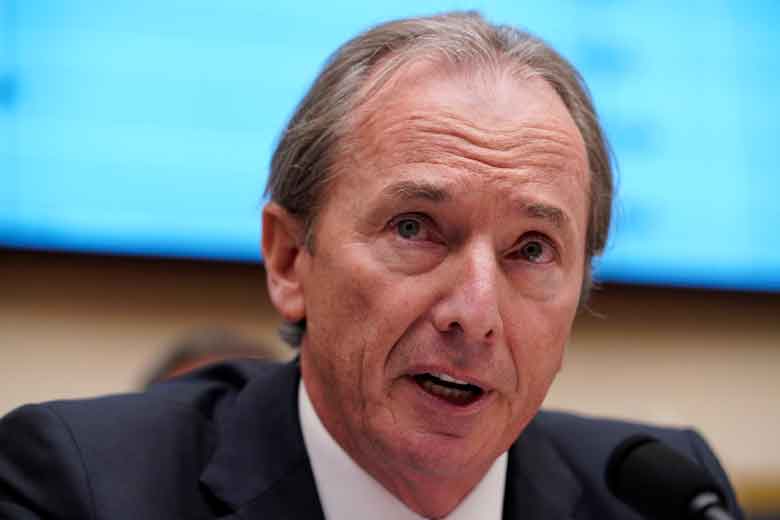After announcing the $13 billion agreed acquisition of E*Trade, Morgan Stanley looks even more like a large wealth management firm with an investment bank attached.
This is the direction in which chairman and chief executive James Gorman has been purposefully leading the storied firm since before taking the top job.
As head of asset and wealth management, he was a key driver of the staggered acquisition of Smith Barney from Citi, announced in 2009, that has since transformed the company.
In 2010, with Gorman now running the whole firm, Morgan Stanley still drew 74% of its profit from institutional securities, which comprises M&A advisory, equity and debt capital markets, equities and fixed income sales and trading.
By 2019, the investment bank contributed just 49% of profits, while wealth and investment management had grown to 51%.
Assuming E*Trade shareholders approve an offer that brings them a big premium – albeit one paid in Morgan Stanley stock and not cash – wealth and asset management will make up 57% of pro-forma profits, pushing institutional securities down to 43%.
“I’ve been around these [wealth management] businesses for 30 years and feel passionate about them,” Gorman reminded analysts.
Next step
The official presentation for the deal calls it the next strategic step in Morgan Stanley’s transformation, not the last step.
Gorman says that his management team’s track record of executing M&A deals, such as the acquisition of Smith Barney and more recently of corporate stock plan manager Solium, shows that Morgan Stanley knows how to integrate such platforms.
The aim all along has been not just to grow earnings per share but to show more durable and less volatile returns to investors – higher quality earnings, in other words that should attract a premium valuation.
Jonathan Pruzan, chief financial officer, presents this as the best way to enhance the long-term franchise value of the company: so, let’s not hear any more about short-term dilution of tangible book value per share.
Forget all the talk of modest-sounding cost savings promised from cutting duplicate platforms and lower funding costs from using E*Trade’s large on- and off-balance sheet deposit base for funding loans to Morgan Stanley wealth clients and even to institutional clients.
This big strategic acquisition is about cross-selling, revenue growth and pushing harder and faster along a path laid out 12 years ago. It is a bet on a convergence of channels between high-touch financial advisory for wealthy people, which is what Morgan Stanley’s 16,000 financial advisers do, and self-directed on-line trading by the mass market, who are E*Trade’s customers.
Culture clash
The limited discussion of potential culture clashes focused on that difference between two wealth management companies serving different wealth levels. Investment banking didn’t rate a mention.
Gorman may go down as the most successful chief executive in Morgan Stanley’s history. He is only 61. But no one goes on for ever, and at some stage succession planning will be the big story around Morgan Stanley.
Gorman inevitably had warm words for E*Trade CEO Michael Pizzi, who will head E*Trade inside Morgan Stanley, run the integration effort and join the operating and management committees of the firm.
“Mike and I immediately hit it off,” Gorman says. “We had a great conversation a couple of months ago and didn’t even talk about numbers, just about strategic fit. We are looking forward to leveraging his insights and infusing our management and technology talent as we grow our combined business.”
Later he describes E*Trade’s management as “world class”, saying that realizing this led to an increasing comfort with the transaction as talks progressed between small teams wall-crossed from both sides.
Euromoney wonders how this might sound to longer serving members of the Morgan Stanley operating committee, especially those from the institutional securities division.
Smith Barney was mentioned several times on the call. But Euromoney thinks back to Morgan Stanley buying Dean Witter in 1997. In America’s always-present-never- acknowledged class divide, this was the classic white-shoe investment bank buying a blue-collar retail broker.
Amid concern about the poor long-term prospects and worrying volatility of investment bank earnings – yes, even back then – Dean Witter’s Philip Purcell became chairman and chief executive with the agreement that he would hand over to Morgan Stanley’s John Mack after a couple of years.
He didn’t. And the firm almost imploded. Not only Mack himself, but other top investment banking talents such as Vikram Pandit and John Havens, who later saved Citigroup, were forced out. Purcell left in 2005.
History remembered
It may feel like ancient history now but Gorman remembers it well. He joined a damaged firm in the aftermath of all this, coming to Morgan Stanley at the start of 2006.
He has issues to wrestle with: coming to more precise approaches to cross-referring clients between the two firms and how to manage both brands.
A typical Gorman pronouncement on keeping the E*Trade brand started with intellectual analysis – “I am not a big fan of destroying brand equity simply for the purity of consolidation” – and ended up delivered straight from the gut: “You’d be completely nuts to get rid of it.”
So, will this be E*Trade powered by Morgan Stanley?
Strategically sound deals can sometimes have unanticipated consequences. Gorman may face a new challenge in managing the competing egos beneath him, especially those with an eye on succession.


 Signal2forex.com - Best Forex robots and signals
Signal2forex.com - Best Forex robots and signals




